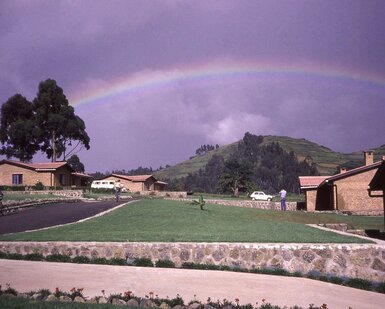Please type a search term (at least two characters)
News
Completed EMPIR project supports a future European optical fibre-based network

The research will continue in a follow-on EMPIR project aiming at combined time and frequency techniques with enhanced performance
The completed project
Recently completed EMPIR project Optical frequency transfer - a European network (15SIB05, OFTEN) helped to unlock the full accuracy potential of optical atomic clocks. It developed comparison techniques for optical clocks based on optical fibres, including installing and upgrading fibre optic links between European National Measurement Institutes. This new network will allow optical clocks to be compared at new levels of accuracy and will pave the way for future improvements in the precision of time and frequency distribution.
The project culminated in the first international optical clock comparison at the level of uncertainty of the clocks themselves.
Impact on the EU CLONETS project
By demonstrating technology readiness of all building blocks for time and frequency dissemination the EMPIR project has had direct impact on recently completed EU project CLONETS (CLOck NETwork Services). This project aims to prepare the transfer of the new generation of technology to industry and to strengthen the coordination between research infrastructures and the research and education telecommunication network, in order to prepare the deployment of this technology to create a sustainable, pan-European network, providing high-performance "clock" services to European research infrastructures.
Follow-on project
The work of the completed OFTEN project will be continued with recently started EMPIR project Advanced time/frequency comparison and dissemination through optical telecommunication networks (18SIB06, TiFOON).
This project will refine techniques for transferring frequency over shared fibre-optic networks, by improving phase coherence and automated link management. It will also take a step beyond OFTEN by developing techniques for time transfer as an add-on to frequency transfer links. Novel applications will be investigated, with geodesy (the Earth’s shape, position and gravitational field) used as an example application. International time scales, synchronised over shared fibre networks, are ultimately expected to lead to novel time-keeping concepts with order-of-magnitude improvements in accuracy.
EMPIR projects are co-funded by the European Union's Horizon 2020 research and innovation programme and the EMPIR Participating States.
Want to hear more about EURAMET?
Sign up for EURAMET newsletters and other information
Follow us on LinkedIn and Twitter
Carbon dioxide, released from man-made activities, is lowering the pH of the Earth’s oceans, and impacting the health of marine organisms worldwide more
Supporting automated and reconfigurable manufacturing systems more
Working with external project Cool White to test and suggest improvements on the locally available white paints more
The project FutureEnergy has provided new calibration services for ultra-high voltages and a good practice guide on Lightning Impulse dividers more
For many of the 5000 photonics companies in Europe a precise knowledge of a material’s optical properties is vital for industrial competitiveness more





